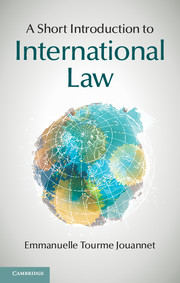Conclusion
Published online by Cambridge University Press: 05 February 2015
Summary
We are witnessing a reconfiguration of international law within the international society that arose out of the Second World War and has become a post-colonial and post-Cold War world. This reconfiguration might seem disconcerting because it combines certain fundamental features of classical international law with new forms of amenability to law and new areas of intervention and regulation. Contemporary international law is the manifestation of an impetus that pervades international law which comes from its distant modern European origins and from the transformation of Western democracies after the Second World War. It is the accomplishment once again of a certain Western ethnocentrism, but which this time has confronted decolonisation, acculturation, cultural impregnation and globalisation. With this momentum, it now reflects a phenomenon of growing ‘pan-legalism’ because new rules of international law are constantly being produced without the old ones being abolished. It is now ubiquitous, intervening everywhere to govern the lives of states, peoples and individuals. It is still a liberal law of regulation while also being a welfarist, interventionist and multifunctional system of law. It is considered to be the guarantor of international peace, in the forms newly instituted by the UN Charter, while also being the guarantor of the freedoms of human beings, of their social rights, of the development of states, the preservation of the biosphere and the collective well-being of the world’s population.
In an age characterised by the political reappraisal of law, the exponential, multifarious, disordered and fragmented development of international law reflects the growing complexity of international society and the national societies that it governs, and therefore a complexity of itself via a feedback effect. Care is required in interpreting these changes and recompositions of law because we have probably not yet taken their full measure nor questioned all of the postulates, consequences or alternatives. Moreover, the focus on this new configuration of contemporary international law produces as many problems as it does new models. It is a mixture of efficacy and powerlessness. Such an observation does not in itself discredit international law but it does demonstrate that, while the changes observed in this book are particularly interesting, they are problematic and invite us to maintain a constantly critical perspective on developments.
- Type
- Chapter
- Information
- A Short Introduction to International Law , pp. 114 - 115Publisher: Cambridge University PressPrint publication year: 2014



